COM12 Business Report: Communication Hierarchy & Structure Analysis
VerifiedAdded on 2023/01/23
|21
|3956
|37
Report
AI Summary
This report provides an analysis of communication hierarchy and organizational structure, focusing on the National Disability Insurance Scheme (NDIS). It examines the role of communication in organizational sustainability, identifying NDIS's chain organization structure. The report explores various leadership and communication styles adopted by NDIS, including authoritative, participative, and transformational leadership. It evaluates the effectiveness of communication using models like Laswell's, Shannon-Weaver's, and Berlo's S-M-R-C model. The report also addresses the significance of visual design elements and intercultural communication challenges, offering recommendations for improving communication processes within the organization.
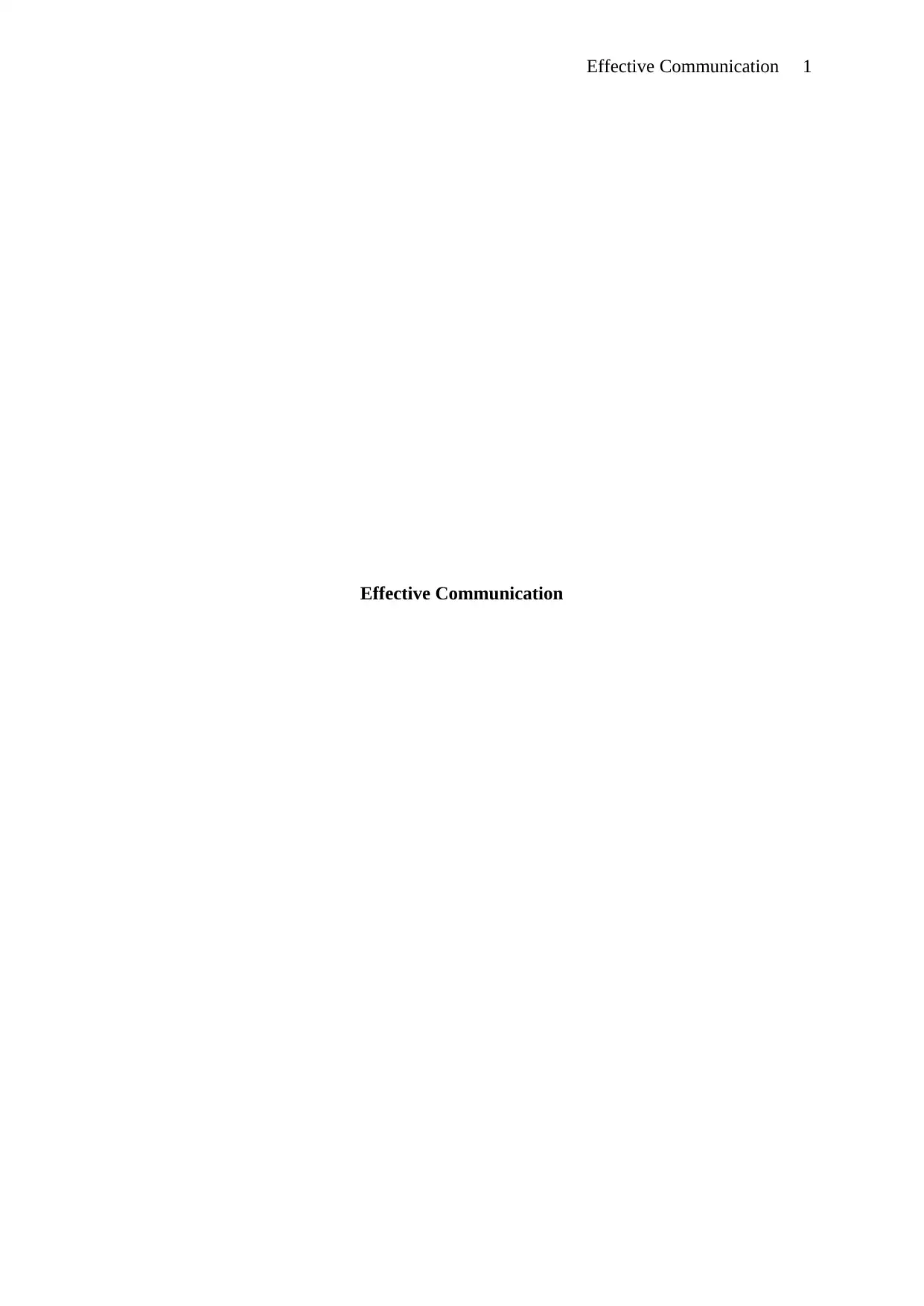
Effective Communication 1
Effective Communication
Effective Communication
Paraphrase This Document
Need a fresh take? Get an instant paraphrase of this document with our AI Paraphraser
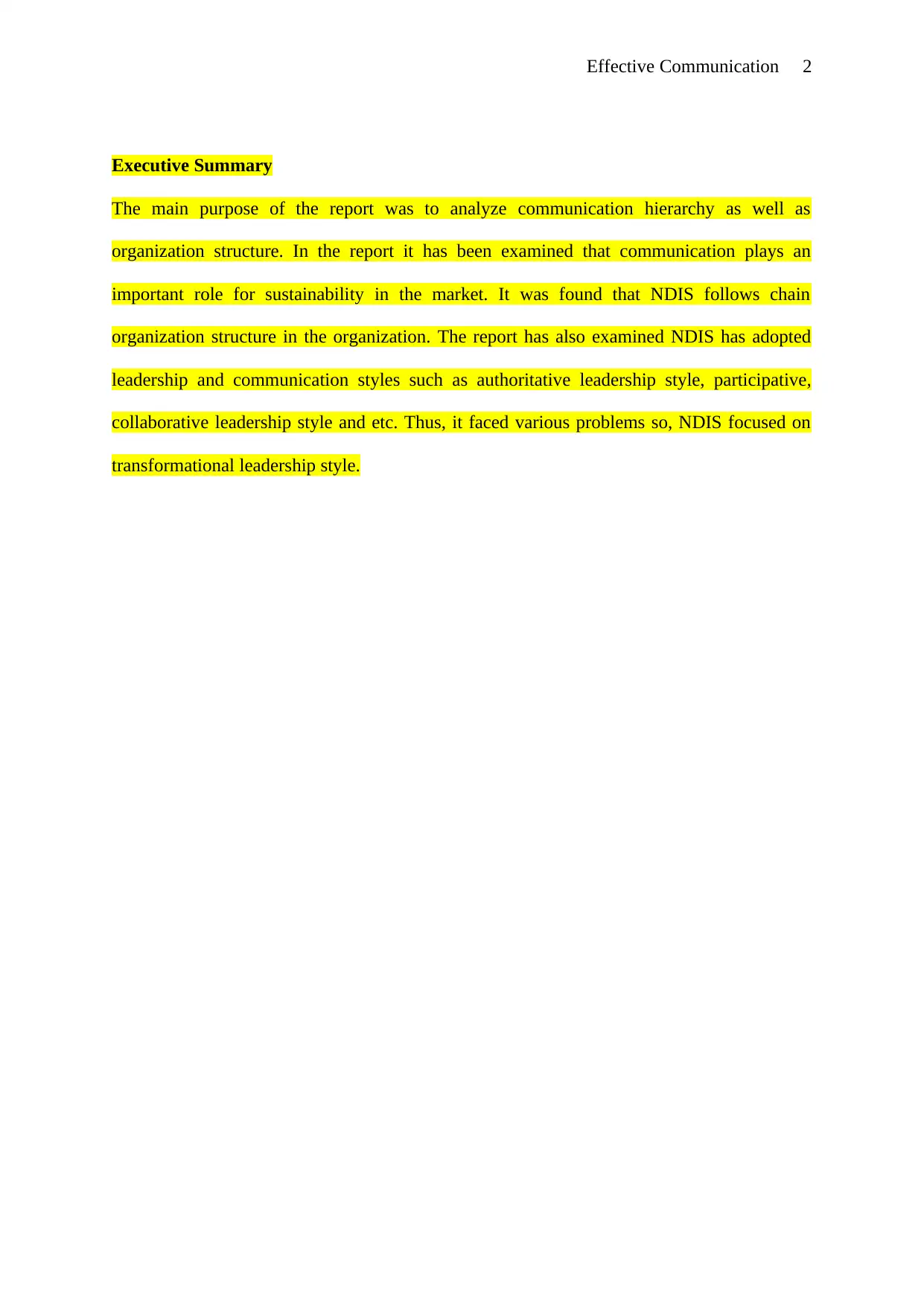
Effective Communication 2
Executive Summary
The main purpose of the report was to analyze communication hierarchy as well as
organization structure. In the report it has been examined that communication plays an
important role for sustainability in the market. It was found that NDIS follows chain
organization structure in the organization. The report has also examined NDIS has adopted
leadership and communication styles such as authoritative leadership style, participative,
collaborative leadership style and etc. Thus, it faced various problems so, NDIS focused on
transformational leadership style.
Executive Summary
The main purpose of the report was to analyze communication hierarchy as well as
organization structure. In the report it has been examined that communication plays an
important role for sustainability in the market. It was found that NDIS follows chain
organization structure in the organization. The report has also examined NDIS has adopted
leadership and communication styles such as authoritative leadership style, participative,
collaborative leadership style and etc. Thus, it faced various problems so, NDIS focused on
transformational leadership style.
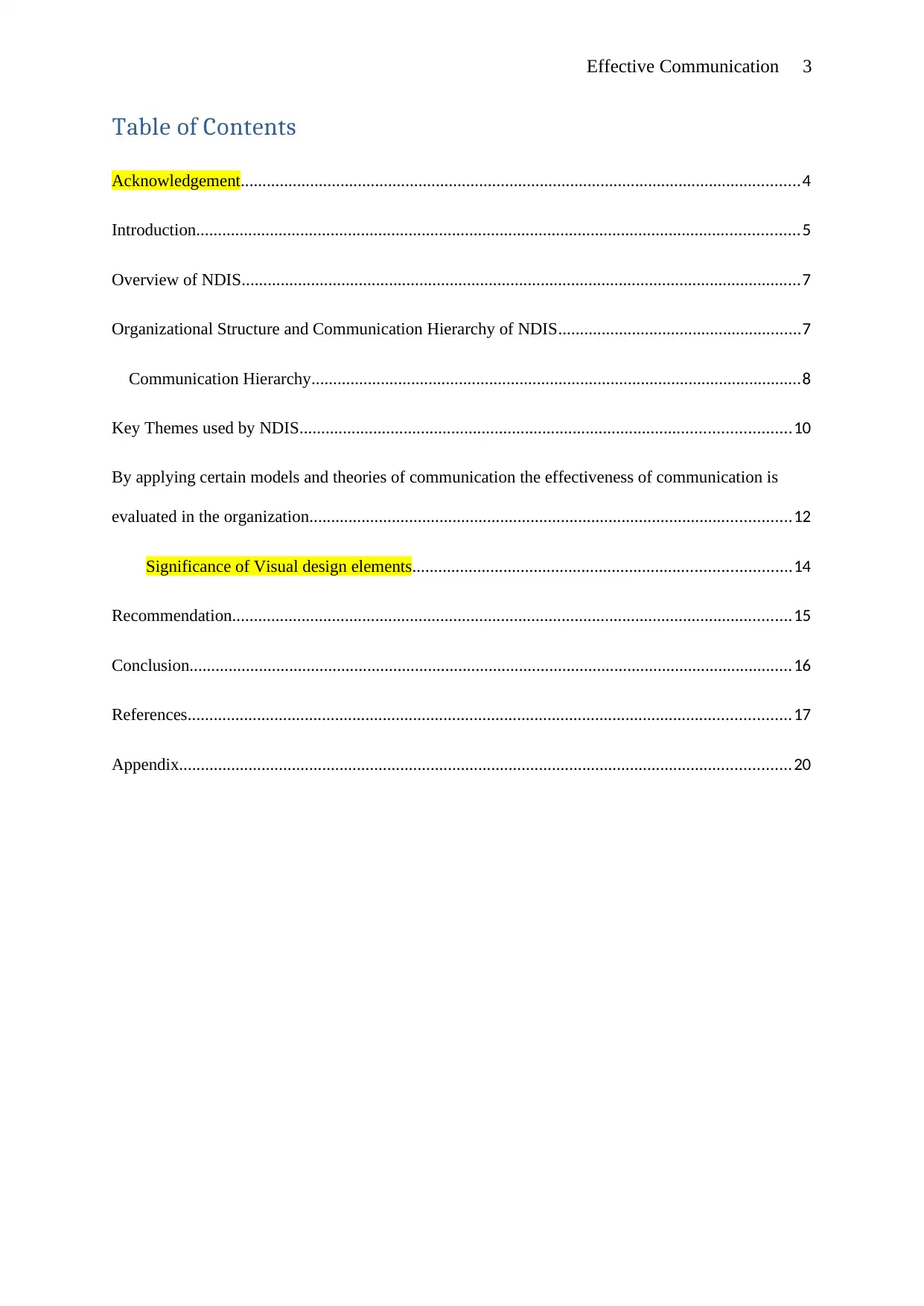
Effective Communication 3
Table of Contents
Acknowledgement.................................................................................................................................4
Introduction...........................................................................................................................................5
Overview of NDIS.................................................................................................................................7
Organizational Structure and Communication Hierarchy of NDIS........................................................7
Communication Hierarchy.................................................................................................................8
Key Themes used by NDIS.................................................................................................................10
By applying certain models and theories of communication the effectiveness of communication is
evaluated in the organization...............................................................................................................12
Significance of Visual design elements.......................................................................................14
Recommendation.................................................................................................................................15
Conclusion...........................................................................................................................................16
References...........................................................................................................................................17
Appendix.............................................................................................................................................20
Table of Contents
Acknowledgement.................................................................................................................................4
Introduction...........................................................................................................................................5
Overview of NDIS.................................................................................................................................7
Organizational Structure and Communication Hierarchy of NDIS........................................................7
Communication Hierarchy.................................................................................................................8
Key Themes used by NDIS.................................................................................................................10
By applying certain models and theories of communication the effectiveness of communication is
evaluated in the organization...............................................................................................................12
Significance of Visual design elements.......................................................................................14
Recommendation.................................................................................................................................15
Conclusion...........................................................................................................................................16
References...........................................................................................................................................17
Appendix.............................................................................................................................................20
⊘ This is a preview!⊘
Do you want full access?
Subscribe today to unlock all pages.

Trusted by 1+ million students worldwide

Effective Communication 4
Acknowledgement
While preparing my assignment, I had to take guidance from secondary sources as well as I
had to consult my doubts from my seniors. The completion of this assignment gave me much
pleasure. I am happy to show my appreciation to .....................to provide me good guideline
for this respective assignment.
Acknowledgement
While preparing my assignment, I had to take guidance from secondary sources as well as I
had to consult my doubts from my seniors. The completion of this assignment gave me much
pleasure. I am happy to show my appreciation to .....................to provide me good guideline
for this respective assignment.
Paraphrase This Document
Need a fresh take? Get an instant paraphrase of this document with our AI Paraphraser
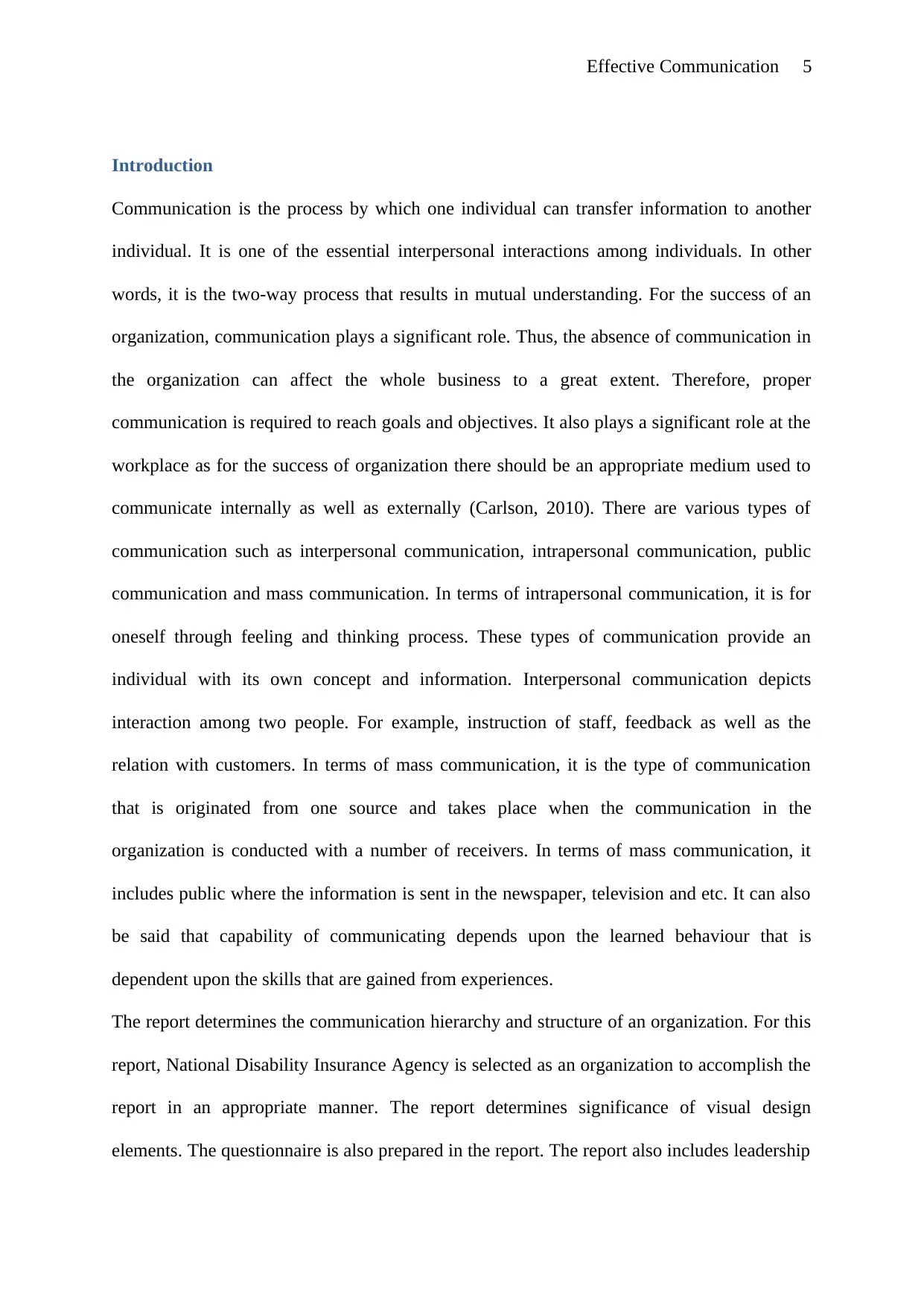
Effective Communication 5
Introduction
Communication is the process by which one individual can transfer information to another
individual. It is one of the essential interpersonal interactions among individuals. In other
words, it is the two-way process that results in mutual understanding. For the success of an
organization, communication plays a significant role. Thus, the absence of communication in
the organization can affect the whole business to a great extent. Therefore, proper
communication is required to reach goals and objectives. It also plays a significant role at the
workplace as for the success of organization there should be an appropriate medium used to
communicate internally as well as externally (Carlson, 2010). There are various types of
communication such as interpersonal communication, intrapersonal communication, public
communication and mass communication. In terms of intrapersonal communication, it is for
oneself through feeling and thinking process. These types of communication provide an
individual with its own concept and information. Interpersonal communication depicts
interaction among two people. For example, instruction of staff, feedback as well as the
relation with customers. In terms of mass communication, it is the type of communication
that is originated from one source and takes place when the communication in the
organization is conducted with a number of receivers. In terms of mass communication, it
includes public where the information is sent in the newspaper, television and etc. It can also
be said that capability of communicating depends upon the learned behaviour that is
dependent upon the skills that are gained from experiences.
The report determines the communication hierarchy and structure of an organization. For this
report, National Disability Insurance Agency is selected as an organization to accomplish the
report in an appropriate manner. The report determines significance of visual design
elements. The questionnaire is also prepared in the report. The report also includes leadership
Introduction
Communication is the process by which one individual can transfer information to another
individual. It is one of the essential interpersonal interactions among individuals. In other
words, it is the two-way process that results in mutual understanding. For the success of an
organization, communication plays a significant role. Thus, the absence of communication in
the organization can affect the whole business to a great extent. Therefore, proper
communication is required to reach goals and objectives. It also plays a significant role at the
workplace as for the success of organization there should be an appropriate medium used to
communicate internally as well as externally (Carlson, 2010). There are various types of
communication such as interpersonal communication, intrapersonal communication, public
communication and mass communication. In terms of intrapersonal communication, it is for
oneself through feeling and thinking process. These types of communication provide an
individual with its own concept and information. Interpersonal communication depicts
interaction among two people. For example, instruction of staff, feedback as well as the
relation with customers. In terms of mass communication, it is the type of communication
that is originated from one source and takes place when the communication in the
organization is conducted with a number of receivers. In terms of mass communication, it
includes public where the information is sent in the newspaper, television and etc. It can also
be said that capability of communicating depends upon the learned behaviour that is
dependent upon the skills that are gained from experiences.
The report determines the communication hierarchy and structure of an organization. For this
report, National Disability Insurance Agency is selected as an organization to accomplish the
report in an appropriate manner. The report determines significance of visual design
elements. The questionnaire is also prepared in the report. The report also includes leadership
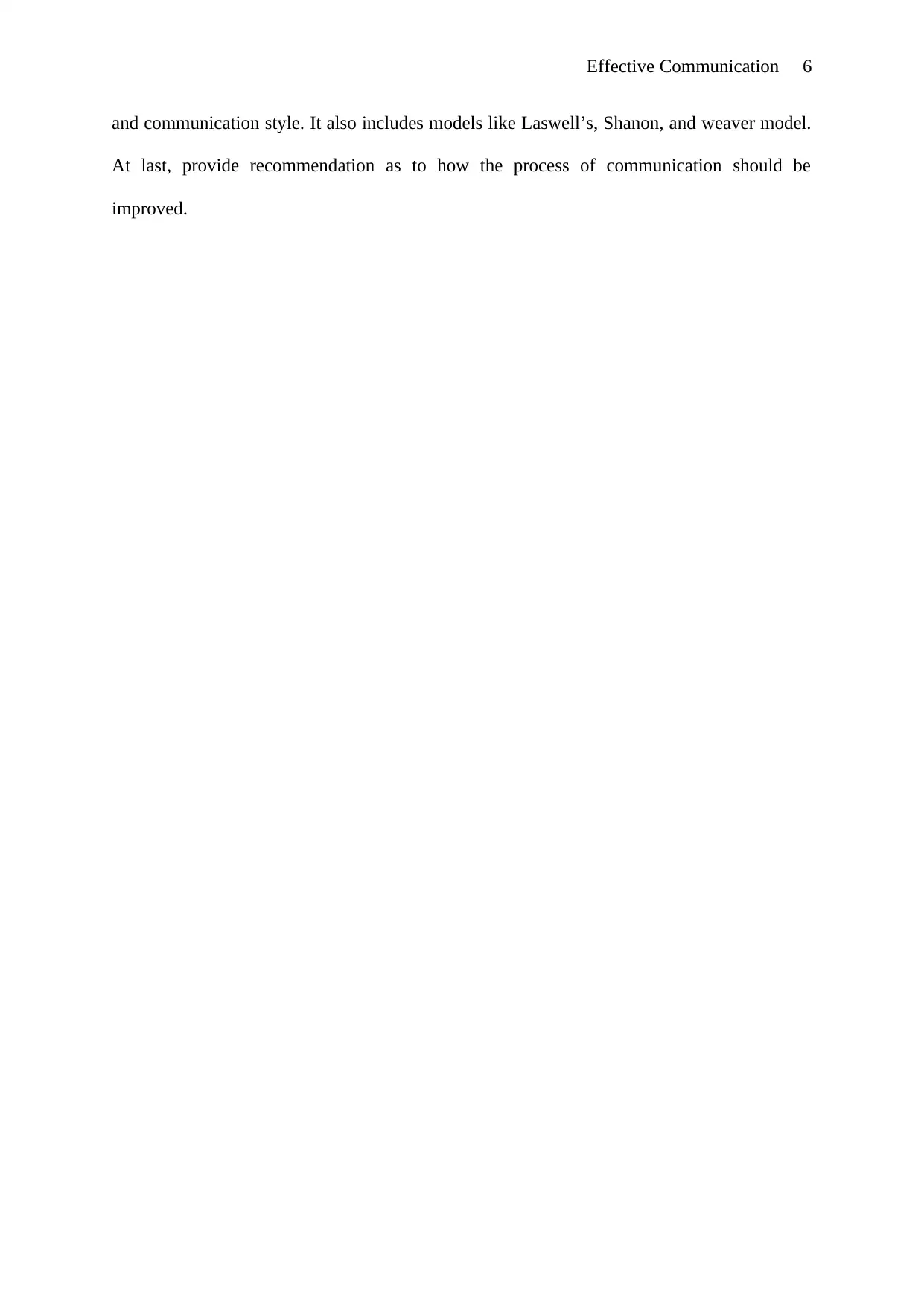
Effective Communication 6
and communication style. It also includes models like Laswell’s, Shanon, and weaver model.
At last, provide recommendation as to how the process of communication should be
improved.
and communication style. It also includes models like Laswell’s, Shanon, and weaver model.
At last, provide recommendation as to how the process of communication should be
improved.
⊘ This is a preview!⊘
Do you want full access?
Subscribe today to unlock all pages.

Trusted by 1+ million students worldwide
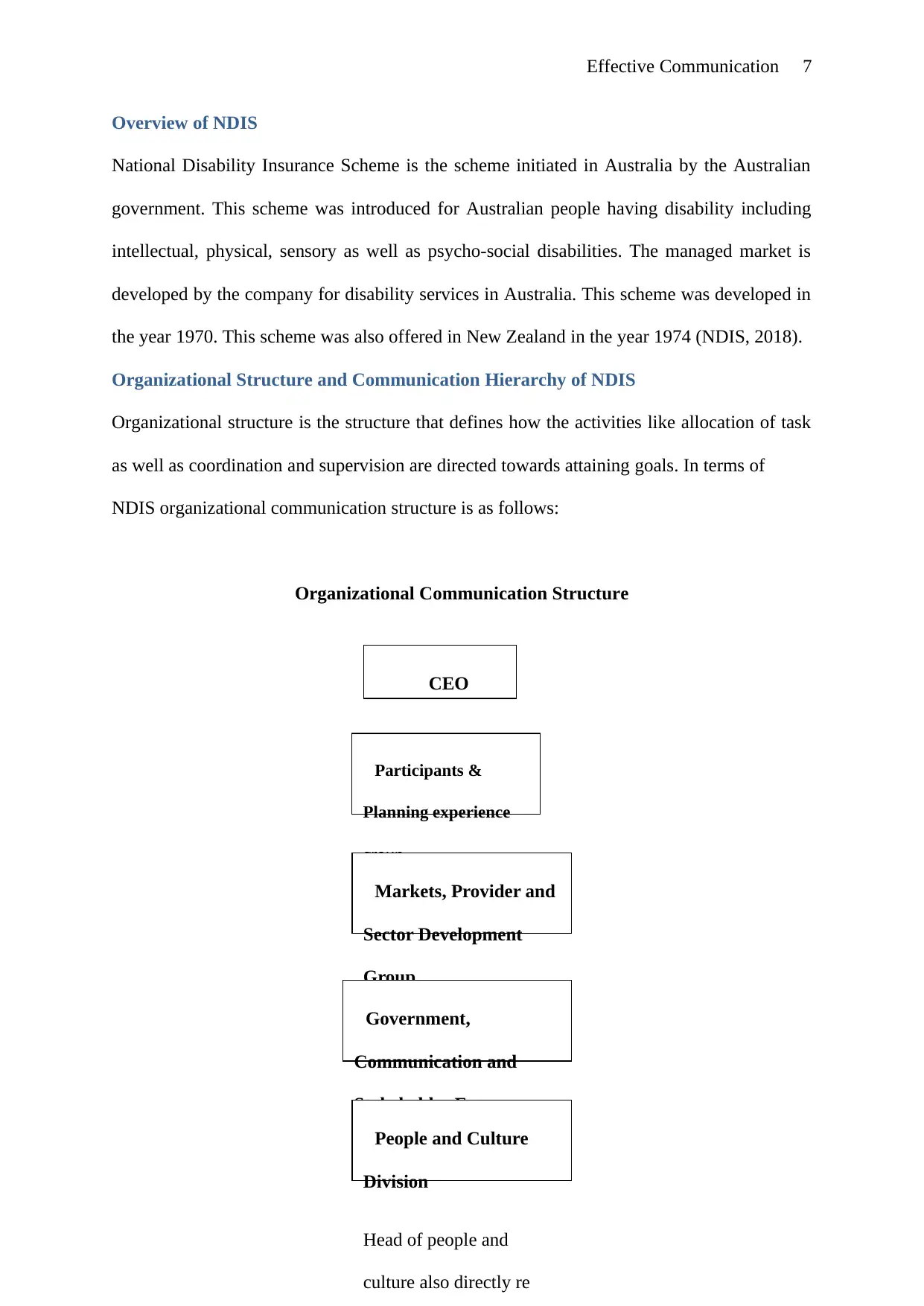
Effective Communication 7
Overview of NDIS
National Disability Insurance Scheme is the scheme initiated in Australia by the Australian
government. This scheme was introduced for Australian people having disability including
intellectual, physical, sensory as well as psycho-social disabilities. The managed market is
developed by the company for disability services in Australia. This scheme was developed in
the year 1970. This scheme was also offered in New Zealand in the year 1974 (NDIS, 2018).
Organizational Structure and Communication Hierarchy of NDIS
Organizational structure is the structure that defines how the activities like allocation of task
as well as coordination and supervision are directed towards attaining goals. In terms of
NDIS organizational communication structure is as follows:
Organizational Communication Structure
CEO
Participants &
Planning experience
group
Markets, Provider and
Sector Development
Group
Government,
Communication and
Stakeholder Engagement
People and Culture
Division
Head of people and
culture also directly re
Overview of NDIS
National Disability Insurance Scheme is the scheme initiated in Australia by the Australian
government. This scheme was introduced for Australian people having disability including
intellectual, physical, sensory as well as psycho-social disabilities. The managed market is
developed by the company for disability services in Australia. This scheme was developed in
the year 1970. This scheme was also offered in New Zealand in the year 1974 (NDIS, 2018).
Organizational Structure and Communication Hierarchy of NDIS
Organizational structure is the structure that defines how the activities like allocation of task
as well as coordination and supervision are directed towards attaining goals. In terms of
NDIS organizational communication structure is as follows:
Organizational Communication Structure
CEO
Participants &
Planning experience
group
Markets, Provider and
Sector Development
Group
Government,
Communication and
Stakeholder Engagement
People and Culture
Division
Head of people and
culture also directly re
Paraphrase This Document
Need a fresh take? Get an instant paraphrase of this document with our AI Paraphraser
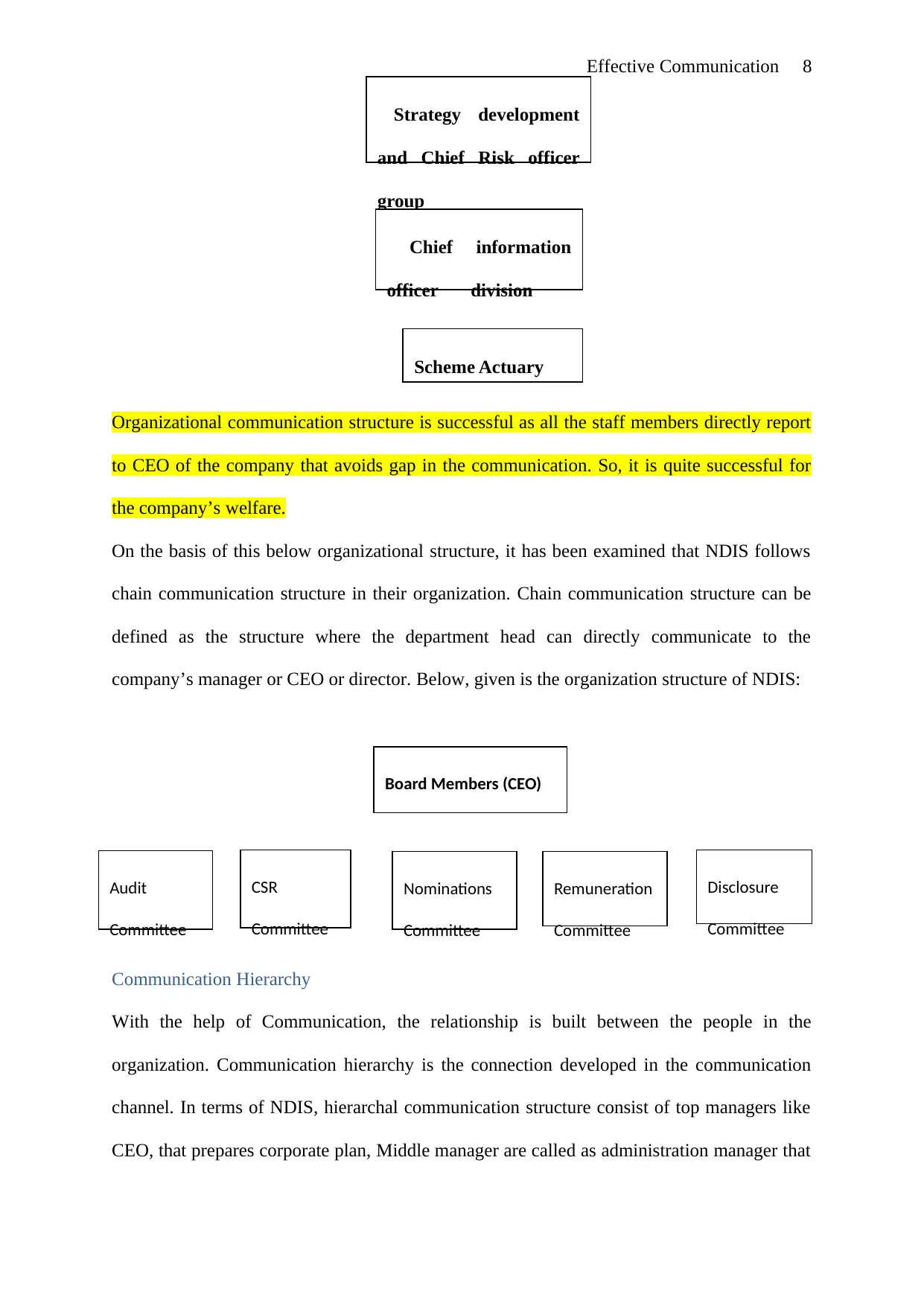
Effective Communication 8
Organizational communication structure is successful as all the staff members directly report
to CEO of the company that avoids gap in the communication. So, it is quite successful for
the company’s welfare.
On the basis of this below organizational structure, it has been examined that NDIS follows
chain communication structure in their organization. Chain communication structure can be
defined as the structure where the department head can directly communicate to the
company’s manager or CEO or director. Below, given is the organization structure of NDIS:
Communication Hierarchy
With the help of Communication, the relationship is built between the people in the
organization. Communication hierarchy is the connection developed in the communication
channel. In terms of NDIS, hierarchal communication structure consist of top managers like
CEO, that prepares corporate plan, Middle manager are called as administration manager that
Board Members (CEO)
Audit
Committee
CSR
Committee
Nominations
Committee
Remuneration
Committee
Disclosure
Committee
Strategy development
and Chief Risk officer
group
Chief information
officer division
Scheme Actuary
Organizational communication structure is successful as all the staff members directly report
to CEO of the company that avoids gap in the communication. So, it is quite successful for
the company’s welfare.
On the basis of this below organizational structure, it has been examined that NDIS follows
chain communication structure in their organization. Chain communication structure can be
defined as the structure where the department head can directly communicate to the
company’s manager or CEO or director. Below, given is the organization structure of NDIS:
Communication Hierarchy
With the help of Communication, the relationship is built between the people in the
organization. Communication hierarchy is the connection developed in the communication
channel. In terms of NDIS, hierarchal communication structure consist of top managers like
CEO, that prepares corporate plan, Middle manager are called as administration manager that
Board Members (CEO)
Audit
Committee
CSR
Committee
Nominations
Committee
Remuneration
Committee
Disclosure
Committee
Strategy development
and Chief Risk officer
group
Chief information
officer division
Scheme Actuary
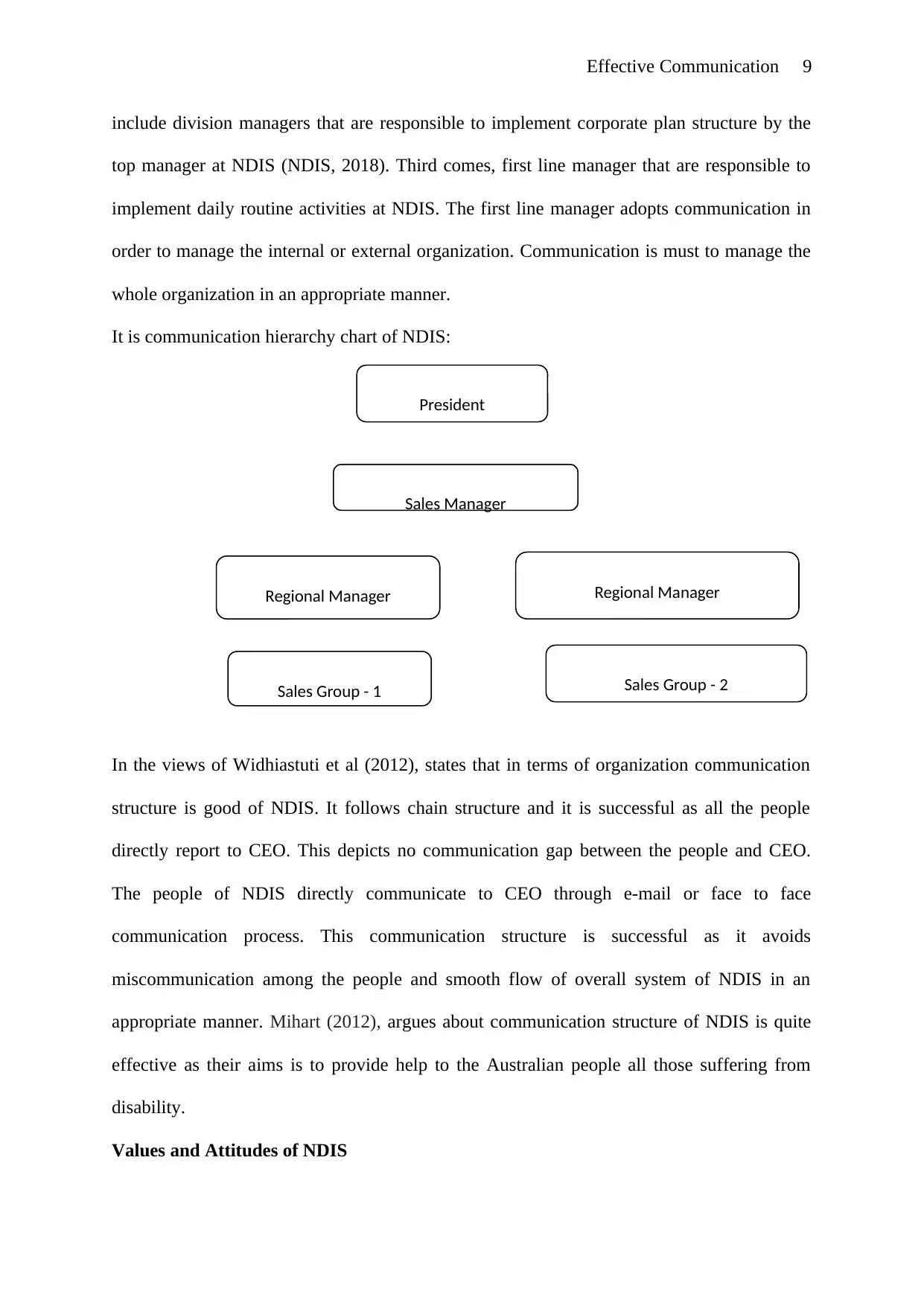
Effective Communication 9
include division managers that are responsible to implement corporate plan structure by the
top manager at NDIS (NDIS, 2018). Third comes, first line manager that are responsible to
implement daily routine activities at NDIS. The first line manager adopts communication in
order to manage the internal or external organization. Communication is must to manage the
whole organization in an appropriate manner.
It is communication hierarchy chart of NDIS:
In the views of Widhiastuti et al (2012), states that in terms of organization communication
structure is good of NDIS. It follows chain structure and it is successful as all the people
directly report to CEO. This depicts no communication gap between the people and CEO.
The people of NDIS directly communicate to CEO through e-mail or face to face
communication process. This communication structure is successful as it avoids
miscommunication among the people and smooth flow of overall system of NDIS in an
appropriate manner. Mihart (2012), argues about communication structure of NDIS is quite
effective as their aims is to provide help to the Australian people all those suffering from
disability.
Values and Attitudes of NDIS
Regional Manager
Sales Group - 1
President
Sales Manager
Regional Manager
Sales Group - 2
include division managers that are responsible to implement corporate plan structure by the
top manager at NDIS (NDIS, 2018). Third comes, first line manager that are responsible to
implement daily routine activities at NDIS. The first line manager adopts communication in
order to manage the internal or external organization. Communication is must to manage the
whole organization in an appropriate manner.
It is communication hierarchy chart of NDIS:
In the views of Widhiastuti et al (2012), states that in terms of organization communication
structure is good of NDIS. It follows chain structure and it is successful as all the people
directly report to CEO. This depicts no communication gap between the people and CEO.
The people of NDIS directly communicate to CEO through e-mail or face to face
communication process. This communication structure is successful as it avoids
miscommunication among the people and smooth flow of overall system of NDIS in an
appropriate manner. Mihart (2012), argues about communication structure of NDIS is quite
effective as their aims is to provide help to the Australian people all those suffering from
disability.
Values and Attitudes of NDIS
Regional Manager
Sales Group - 1
President
Sales Manager
Regional Manager
Sales Group - 2
⊘ This is a preview!⊘
Do you want full access?
Subscribe today to unlock all pages.

Trusted by 1+ million students worldwide
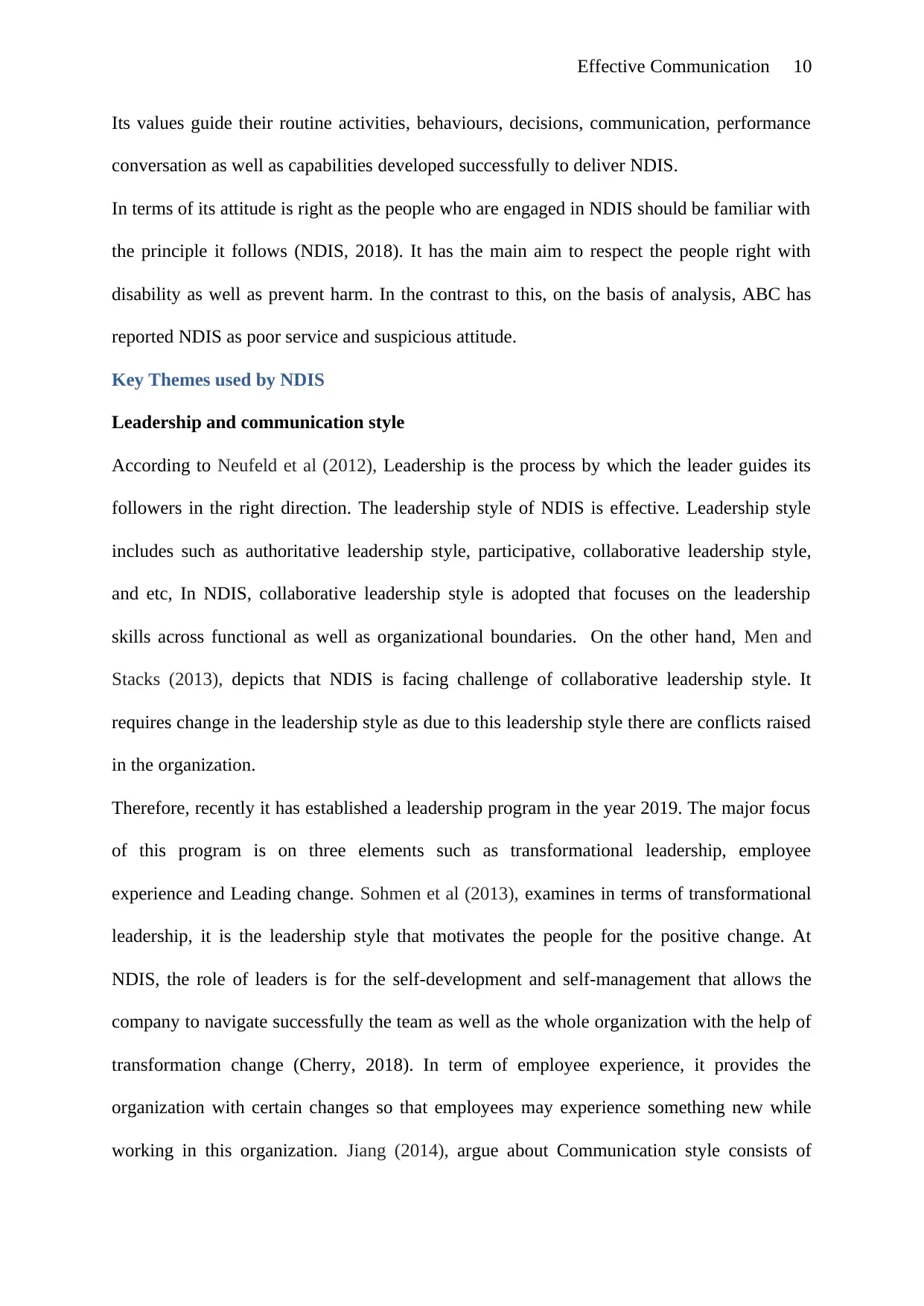
Effective Communication 10
Its values guide their routine activities, behaviours, decisions, communication, performance
conversation as well as capabilities developed successfully to deliver NDIS.
In terms of its attitude is right as the people who are engaged in NDIS should be familiar with
the principle it follows (NDIS, 2018). It has the main aim to respect the people right with
disability as well as prevent harm. In the contrast to this, on the basis of analysis, ABC has
reported NDIS as poor service and suspicious attitude.
Key Themes used by NDIS
Leadership and communication style
According to Neufeld et al (2012), Leadership is the process by which the leader guides its
followers in the right direction. The leadership style of NDIS is effective. Leadership style
includes such as authoritative leadership style, participative, collaborative leadership style,
and etc, In NDIS, collaborative leadership style is adopted that focuses on the leadership
skills across functional as well as organizational boundaries. On the other hand, Men and
Stacks (2013), depicts that NDIS is facing challenge of collaborative leadership style. It
requires change in the leadership style as due to this leadership style there are conflicts raised
in the organization.
Therefore, recently it has established a leadership program in the year 2019. The major focus
of this program is on three elements such as transformational leadership, employee
experience and Leading change. Sohmen et al (2013), examines in terms of transformational
leadership, it is the leadership style that motivates the people for the positive change. At
NDIS, the role of leaders is for the self-development and self-management that allows the
company to navigate successfully the team as well as the whole organization with the help of
transformation change (Cherry, 2018). In term of employee experience, it provides the
organization with certain changes so that employees may experience something new while
working in this organization. Jiang (2014), argue about Communication style consists of
Its values guide their routine activities, behaviours, decisions, communication, performance
conversation as well as capabilities developed successfully to deliver NDIS.
In terms of its attitude is right as the people who are engaged in NDIS should be familiar with
the principle it follows (NDIS, 2018). It has the main aim to respect the people right with
disability as well as prevent harm. In the contrast to this, on the basis of analysis, ABC has
reported NDIS as poor service and suspicious attitude.
Key Themes used by NDIS
Leadership and communication style
According to Neufeld et al (2012), Leadership is the process by which the leader guides its
followers in the right direction. The leadership style of NDIS is effective. Leadership style
includes such as authoritative leadership style, participative, collaborative leadership style,
and etc, In NDIS, collaborative leadership style is adopted that focuses on the leadership
skills across functional as well as organizational boundaries. On the other hand, Men and
Stacks (2013), depicts that NDIS is facing challenge of collaborative leadership style. It
requires change in the leadership style as due to this leadership style there are conflicts raised
in the organization.
Therefore, recently it has established a leadership program in the year 2019. The major focus
of this program is on three elements such as transformational leadership, employee
experience and Leading change. Sohmen et al (2013), examines in terms of transformational
leadership, it is the leadership style that motivates the people for the positive change. At
NDIS, the role of leaders is for the self-development and self-management that allows the
company to navigate successfully the team as well as the whole organization with the help of
transformation change (Cherry, 2018). In term of employee experience, it provides the
organization with certain changes so that employees may experience something new while
working in this organization. Jiang (2014), argue about Communication style consists of
Paraphrase This Document
Need a fresh take? Get an instant paraphrase of this document with our AI Paraphraser
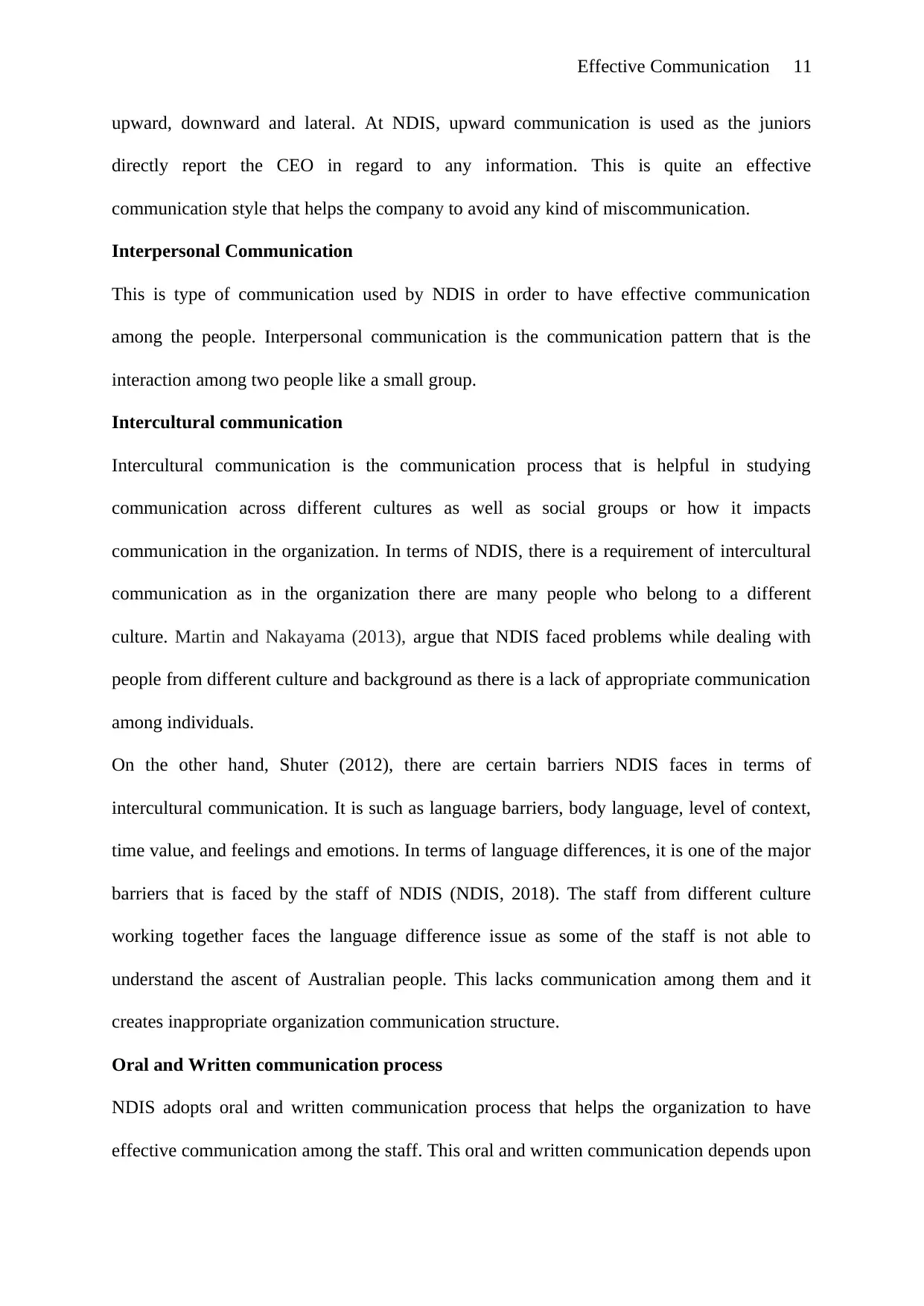
Effective Communication 11
upward, downward and lateral. At NDIS, upward communication is used as the juniors
directly report the CEO in regard to any information. This is quite an effective
communication style that helps the company to avoid any kind of miscommunication.
Interpersonal Communication
This is type of communication used by NDIS in order to have effective communication
among the people. Interpersonal communication is the communication pattern that is the
interaction among two people like a small group.
Intercultural communication
Intercultural communication is the communication process that is helpful in studying
communication across different cultures as well as social groups or how it impacts
communication in the organization. In terms of NDIS, there is a requirement of intercultural
communication as in the organization there are many people who belong to a different
culture. Martin and Nakayama (2013), argue that NDIS faced problems while dealing with
people from different culture and background as there is a lack of appropriate communication
among individuals.
On the other hand, Shuter (2012), there are certain barriers NDIS faces in terms of
intercultural communication. It is such as language barriers, body language, level of context,
time value, and feelings and emotions. In terms of language differences, it is one of the major
barriers that is faced by the staff of NDIS (NDIS, 2018). The staff from different culture
working together faces the language difference issue as some of the staff is not able to
understand the ascent of Australian people. This lacks communication among them and it
creates inappropriate organization communication structure.
Oral and Written communication process
NDIS adopts oral and written communication process that helps the organization to have
effective communication among the staff. This oral and written communication depends upon
upward, downward and lateral. At NDIS, upward communication is used as the juniors
directly report the CEO in regard to any information. This is quite an effective
communication style that helps the company to avoid any kind of miscommunication.
Interpersonal Communication
This is type of communication used by NDIS in order to have effective communication
among the people. Interpersonal communication is the communication pattern that is the
interaction among two people like a small group.
Intercultural communication
Intercultural communication is the communication process that is helpful in studying
communication across different cultures as well as social groups or how it impacts
communication in the organization. In terms of NDIS, there is a requirement of intercultural
communication as in the organization there are many people who belong to a different
culture. Martin and Nakayama (2013), argue that NDIS faced problems while dealing with
people from different culture and background as there is a lack of appropriate communication
among individuals.
On the other hand, Shuter (2012), there are certain barriers NDIS faces in terms of
intercultural communication. It is such as language barriers, body language, level of context,
time value, and feelings and emotions. In terms of language differences, it is one of the major
barriers that is faced by the staff of NDIS (NDIS, 2018). The staff from different culture
working together faces the language difference issue as some of the staff is not able to
understand the ascent of Australian people. This lacks communication among them and it
creates inappropriate organization communication structure.
Oral and Written communication process
NDIS adopts oral and written communication process that helps the organization to have
effective communication among the staff. This oral and written communication depends upon
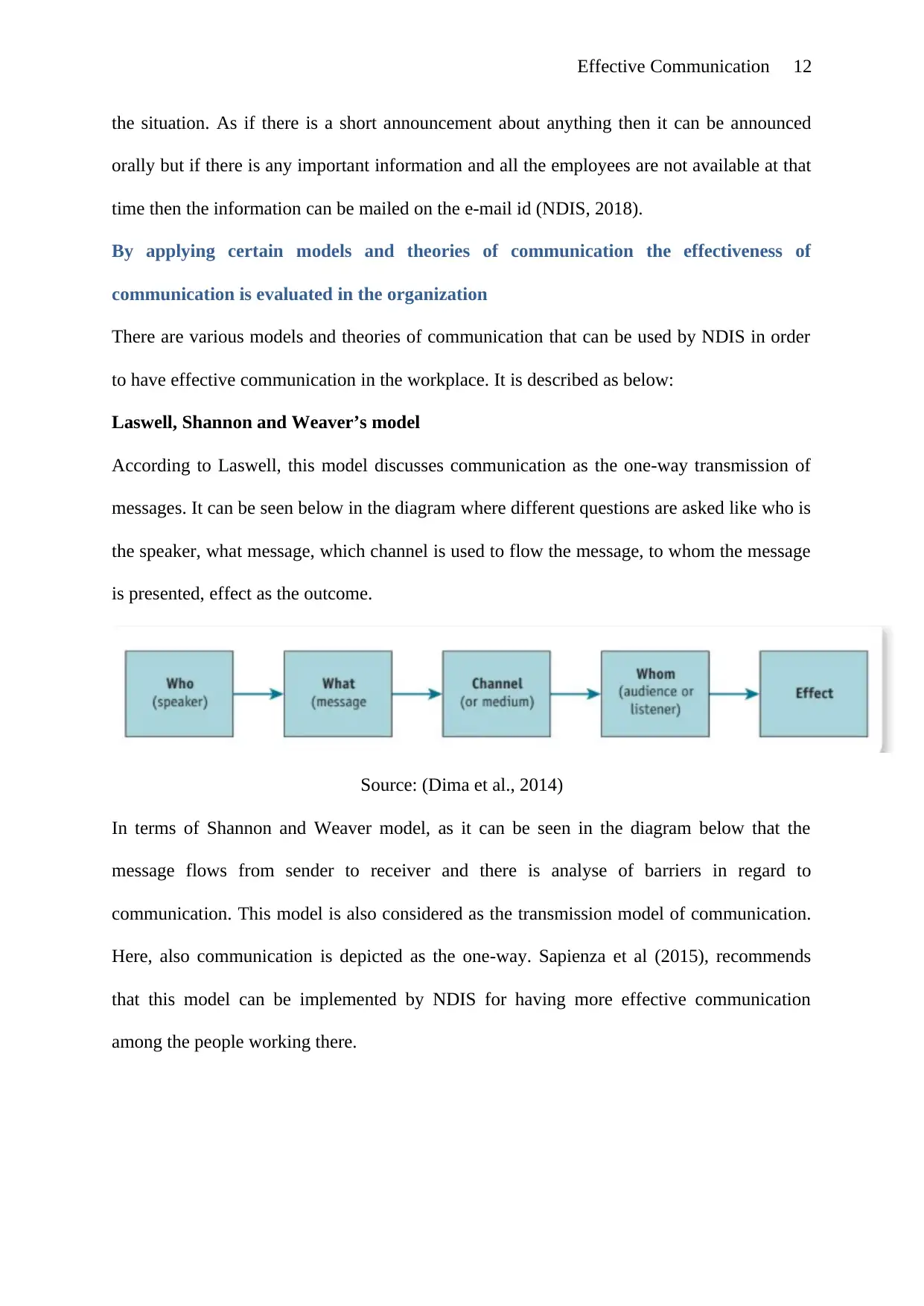
Effective Communication 12
the situation. As if there is a short announcement about anything then it can be announced
orally but if there is any important information and all the employees are not available at that
time then the information can be mailed on the e-mail id (NDIS, 2018).
By applying certain models and theories of communication the effectiveness of
communication is evaluated in the organization
There are various models and theories of communication that can be used by NDIS in order
to have effective communication in the workplace. It is described as below:
Laswell, Shannon and Weaver’s model
According to Laswell, this model discusses communication as the one-way transmission of
messages. It can be seen below in the diagram where different questions are asked like who is
the speaker, what message, which channel is used to flow the message, to whom the message
is presented, effect as the outcome.
Source: (Dima et al., 2014)
In terms of Shannon and Weaver model, as it can be seen in the diagram below that the
message flows from sender to receiver and there is analyse of barriers in regard to
communication. This model is also considered as the transmission model of communication.
Here, also communication is depicted as the one-way. Sapienza et al (2015), recommends
that this model can be implemented by NDIS for having more effective communication
among the people working there.
the situation. As if there is a short announcement about anything then it can be announced
orally but if there is any important information and all the employees are not available at that
time then the information can be mailed on the e-mail id (NDIS, 2018).
By applying certain models and theories of communication the effectiveness of
communication is evaluated in the organization
There are various models and theories of communication that can be used by NDIS in order
to have effective communication in the workplace. It is described as below:
Laswell, Shannon and Weaver’s model
According to Laswell, this model discusses communication as the one-way transmission of
messages. It can be seen below in the diagram where different questions are asked like who is
the speaker, what message, which channel is used to flow the message, to whom the message
is presented, effect as the outcome.
Source: (Dima et al., 2014)
In terms of Shannon and Weaver model, as it can be seen in the diagram below that the
message flows from sender to receiver and there is analyse of barriers in regard to
communication. This model is also considered as the transmission model of communication.
Here, also communication is depicted as the one-way. Sapienza et al (2015), recommends
that this model can be implemented by NDIS for having more effective communication
among the people working there.
⊘ This is a preview!⊘
Do you want full access?
Subscribe today to unlock all pages.

Trusted by 1+ million students worldwide
1 out of 21
Related Documents
Your All-in-One AI-Powered Toolkit for Academic Success.
+13062052269
info@desklib.com
Available 24*7 on WhatsApp / Email
![[object Object]](/_next/static/media/star-bottom.7253800d.svg)
Unlock your academic potential
Copyright © 2020–2025 A2Z Services. All Rights Reserved. Developed and managed by ZUCOL.





